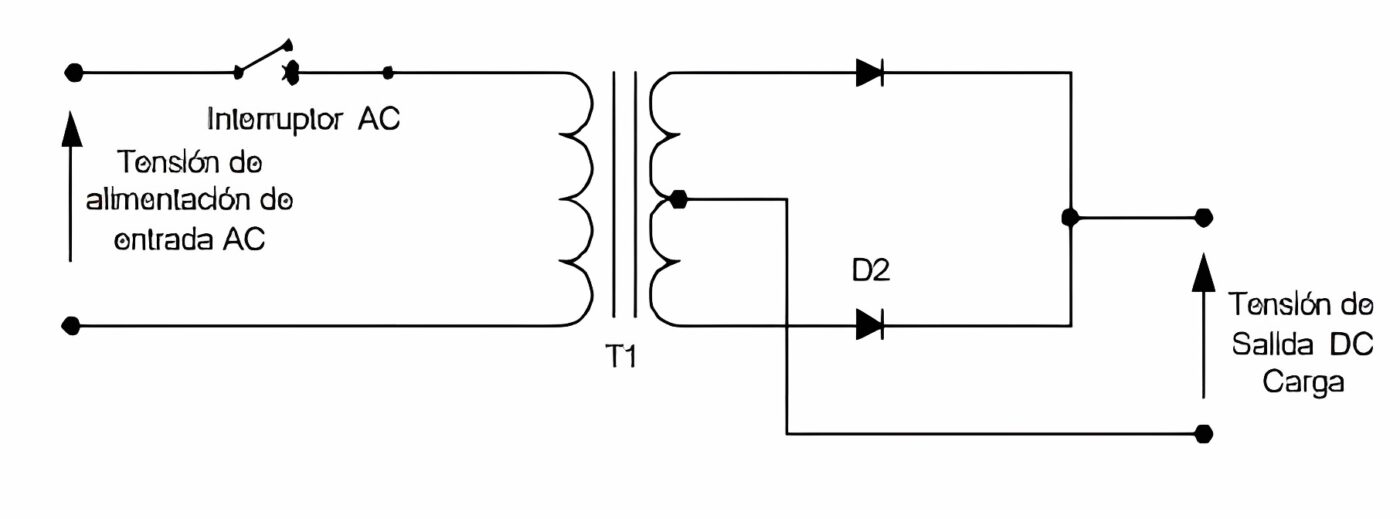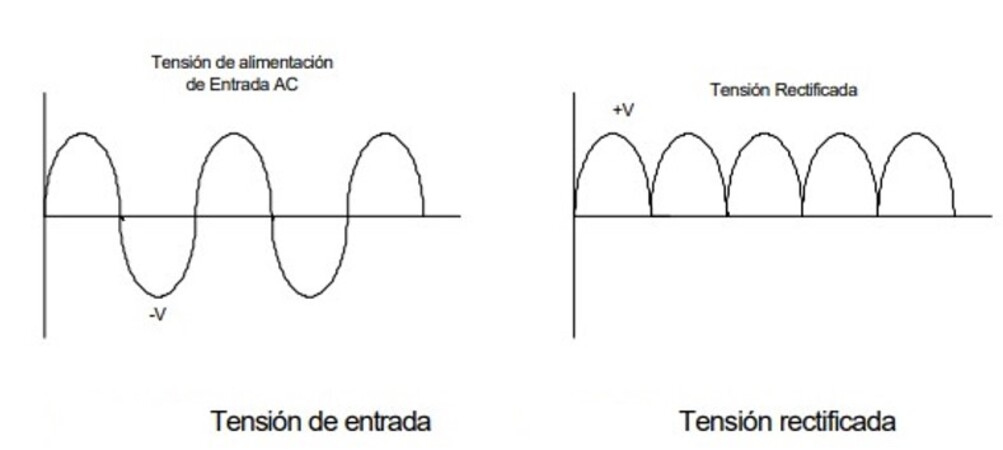Sistemas de Energía DC/AC
AC DC rectifiers with thyristor regulation
The AC-DC rectifier with thyristor regulation is the oldest type used in telecommunications. It is known for its reliability and robustness, and this technology is the simplest.
However, these devices are quite bulky. For instance, a 100 A rectifier can be as tall as 2 meters by 80 cm wide and very heavy.
Before we begin, we invite you to read our post on Controlled and uncontrolled AC-DC rectifiers.
Operation of thyristor regulation
Fundamentally, this type of rectification only requires a setup with 2 diodes and a transformer, as you can see in the above image.

This is a form of half-wave rectification; however, its output has a high ripple factor, as shown in the lower figure.

The ripple is a source of electrical disturbance for telecommunications equipment, to the extent that it can adversely affect their performance. For this reason, in the output of thyristor-controlled rectifiers, this signal must be filtered.
Manufacturers accomplishes this by incorporating elements such as inductors to filter the current and capacitors to filter the voltage. Both cases targeting the high-frequency components of the ripple.
However, the most effective way to reduce this ripple is by employing three-phase rectification, which essentially involves integrating 3 single-phase rectifiers.
This is why thyristor-based AC-DC rectifiers are manufactured following this economically advantageous principle. In its time, this approach played a highly influential role in the widespread adoption of telecommunications.
Advantages of using thyristor regulation
You should know that despite being an older technology, thyristor-controlled AC-DC rectifiers have never become obsolete. Even today, many of them are still in operation in various telecommunications installations, primarily because:
- They are very reliable and robust
- High immunity to electrical aberrations and can function with poor-quality input power
- Do not require an additional power distribution panel, as they essentially serve as a power panel themselves
Disadvantages of using thyristor regulation
In this regard, their main drawbacks are not inherent to them but rather stem from the telecommunications loads connected to them.
- Due to the thyristors’ switching in rectifiers, they generate significant noise, both in the audible range and in terms of electrical disturbances
- Their output signal has a high ripple, meaning it contains sinusoidal components of very high frequency and short amplitude, causing interference and malfunctions in connected loads
- They inject a large number of harmonic signals into the AC system
- Require substantial space for installation due to their large size and cannot be placed in communication rooms
- Very low energy efficiency
- They exhibit a very low power factor, leading to overheating in conductors and AC power transformers, and even false tripping of protections.
Now, the most notable constructive disadvantage of thyristor-regulated rectifiers is their large size and the presence of a transformer. Additionally, being constructed with analog electronic components, they need periodic recalibration.
As you can see, thyristor-controlled AC-DC rectifiers can be a viable option, albeit more suitable for telecommunications equipment that isn’t highly sensitive to power quality.
For you, we have our Course on Sizing and Designing DC Power Systems for Telecommunications and Critical Systems. With it, you will learn everything you need to know about these systems. Click here to find out more about its content
On our website energydcac, we’ll be publishing posts analyzing the remaining AC-DC rectifier technologies. You can also explore various contents we’ve published on DC/AC and solar energy. Don’t miss out!

